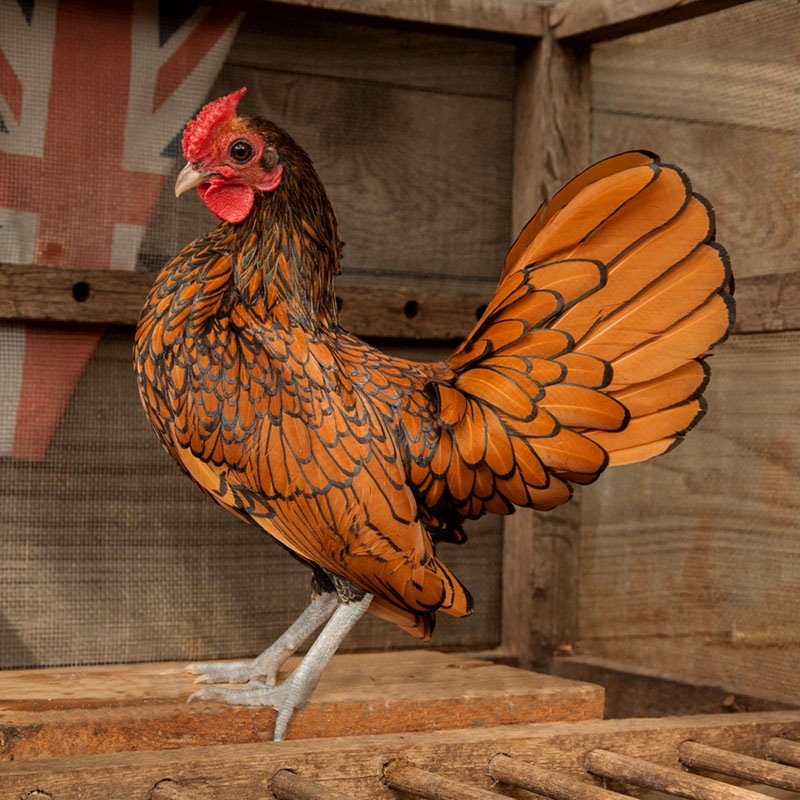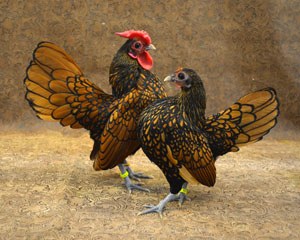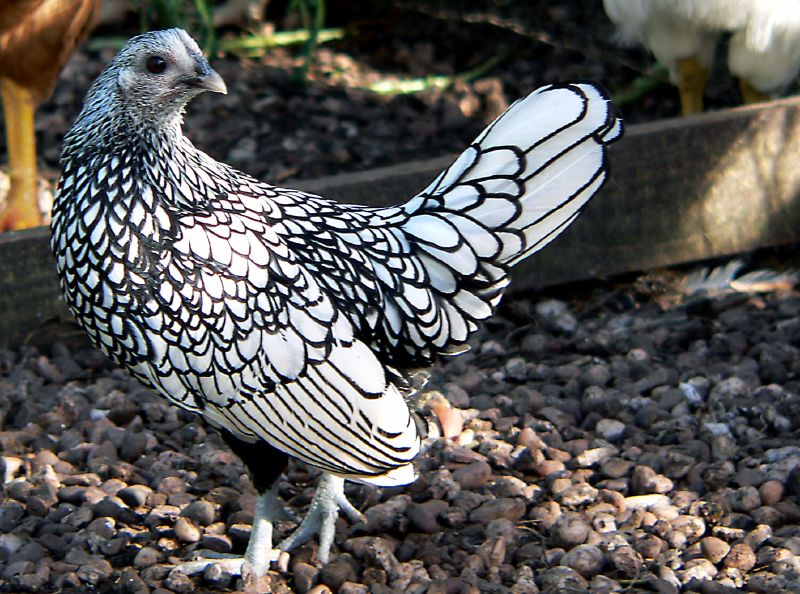Sebright Chicken
 The Sebright is one of the oldest British bantams. Developed in approximately 1800
by Sir John Sebright, 7th Baronet of Besford, Worcestershire, this breed was designed
to be a small bantam with laced plumage. It is believed that this selective breeding
process took Sebright twenty years of mixing Nankin and Rosecomb chickens with native bantams and Polish breeds. It is believed the golden
colored Sebrights was produced from a buff bantam Nankin hen, and the silver produced
from a white Rosecomb cockerel.
The Sebright is one of the oldest British bantams. Developed in approximately 1800
by Sir John Sebright, 7th Baronet of Besford, Worcestershire, this breed was designed
to be a small bantam with laced plumage. It is believed that this selective breeding
process took Sebright twenty years of mixing Nankin and Rosecomb chickens with native bantams and Polish breeds. It is believed the golden
colored Sebrights was produced from a buff bantam Nankin hen, and the silver produced
from a white Rosecomb cockerel.
They are considered the "true bantam", because there is no standard version of the breed.
The American Poultry Association recognized the Sebright in 1874, in Golden and Silver colors, which are also the most popular colors.
Characteristics
 The Sebright is known for both their small size and lace patterned plumage. How small?
The males typically weigh in at 22 ounces, and the females 20 ounces.
The Sebright is known for both their small size and lace patterned plumage. How small?
The males typically weigh in at 22 ounces, and the females 20 ounces.
Sebright hens and cocks look very similar to one another. They have short backs, but full and convex breasts, with large wings that hang downwards. Their tails are full, and they carry them above the horizontal.
The Sebright males have large combs that end in a spike, going straight back, and large, red, rounded wattles. Both these characteristics are also present in the female, but much smaller.
Raising Sebrights
While easily tamed, Sebrights are said to be a poor choice for beginners to chicken
raisers, due  to their susceptibility to Marek's disease. They're a poor meat breed, and an even
poorer egg breed. They lay small and very few white eggs, from 50 to 80 a year, and
the hens have poor brooding instincts. With those uses ruled out and their proud appearance
so stark, the Sebright is primarily an ornamental breed.
to their susceptibility to Marek's disease. They're a poor meat breed, and an even
poorer egg breed. They lay small and very few white eggs, from 50 to 80 a year, and
the hens have poor brooding instincts. With those uses ruled out and their proud appearance
so stark, the Sebright is primarily an ornamental breed.
Due to males needing warmth for breeding, the Sebright is ideally bred in April, May or June.
References
The Livestock Conservancy PO Box 477, 33 Hillsboro St, Pittsboro, NC 27312
